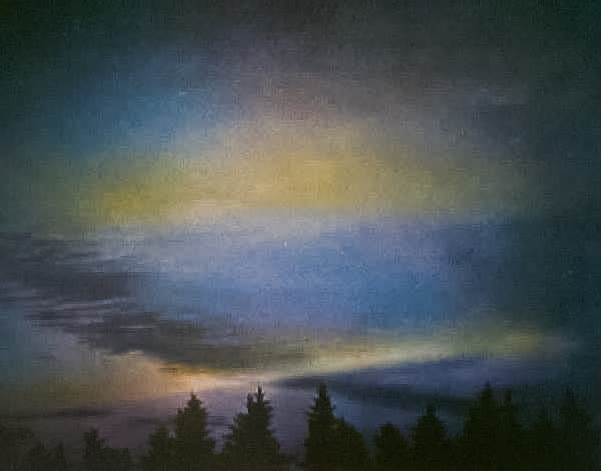http://en.wikipedia.org/wiki/Airglow wrote:
<<Airglow (also called nightglow) is the very weak emission of light by a planetary atmosphere. In the case of Earth's atmosphere, this phenomenon causes the night sky to never be completely dark (even after the effects of starlight and diffused sunlight from the far side are removed).
The airglow phenomenon was first identified in 1868 by Swedish scientist Anders Ångström. Since then it has been studied in the laboratory, and various chemical reactions have been observed to emit electromagnetic energy as part of the process. Scientists have identified some of those processes which would be present in Earth's atmosphere, and astronomers have verified that such emissions are present.
Airglow is caused by various processes in the upper atmosphere, such as the recombination of ions which were photoionized by the sun during the day, luminescence caused by cosmic rays striking the upper atmosphere, and chemiluminescence caused mainly by oxygen and nitrogen reacting with hydroxyl ions at heights of a few hundred kilometers. It is not noticeable during the daytime because of the scattered light from the Sun.
Even at the best ground-based observatories, airglow limits the sensitivity of telescopes at visible wavelengths. Partly for this reason, space-based telescopes such as the Hubble Space Telescope can observe much fainter objects than current ground-based telescopes at visible wavelengths.
The airglow at night may be bright enough to be noticed by an observer, and is generally bluish in color. Although airglow emission is fairly uniform across the atmosphere, to an observer on the ground it appears brightest at about 10 degrees above the horizon, because the lower one looks the greater the depth of atmosphere one is looking through. Very low down, however, atmospheric extinction reduces the apparent brightness of the airglow.
One airglow mechanism is when an atom of nitrogen combines with an atom of oxygen to form a molecule of nitric oxide (NO). In the process a photon is emitted. This photon may have any of several different wavelengths characteristic of nitric oxide molecules. The free atoms are available for this process because molecules of nitrogen (N2) and oxygen (O2) are dissociated by solar energy in the upper reaches of the atmosphere, and may encounter each other to form NO. Other species that can create air glow in the atmosphere are Hydroxyl (OH), molecular Oxygen (O), and Sodium (Na)and Lithium (Li).>>
 Night Lights
Night Lights